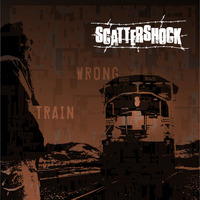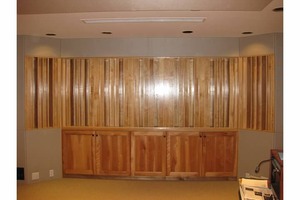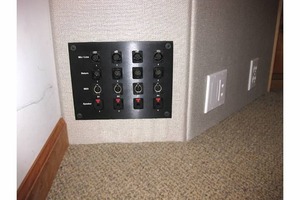Scattershock - Recording "Wrong Train": Part 2
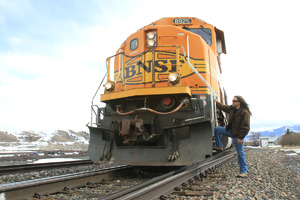 In my previous article, I explained how we shifted our focus from the Shatterbox remixes to finishing off the Scattershock tracks originally recorded in Denver. This time, I will go into some detail about what it took to finish the recording, mixing and mastering of the Scattershock Wrong Train album.
In my previous article, I explained how we shifted our focus from the Shatterbox remixes to finishing off the Scattershock tracks originally recorded in Denver. This time, I will go into some detail about what it took to finish the recording, mixing and mastering of the Scattershock Wrong Train album.
During the same period when I was tracking rhythm guitars, Steve and I were using our nights in the studio to finish off the drum and bass reprocessing. Once we'd wrapped that up, we proceeded with vocal tracking. Over the years, Steve and I had always hoped we'd find someone to handle lead vocals, but that never panned out. We finally talked it over and decided that he and I were still the two people most likely to truly feel the songs and lyrics. For a number of reasons, we decided it would be best if I took on the lead vocals, and the two of us would split backup vocal parts. Once that decision was made, we dug in and worked our way through the songs and parts. Somehow, all the energy and eventual frustration that was part of the Shatterbox remixes came pouring out. For the first time ever, I really felt like I was able to channel my emotions directly into my vocal performances. I still wish my voice had more natural magic but I feel like this batch of tracks reflects the best my vocal cords and years of training could produce.
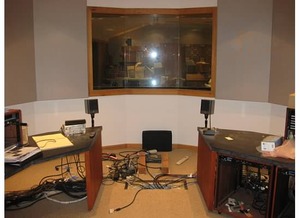 While we were working our way through the rhythm guitars, lead and backup vocals, Nancy and I were making the difficult decision to move out of the Bay Area, relocating to Bozeman, Montana. This was a very painful decision for me, and was equally hard on Steve. Although it didn't soften that pain for either of us, we agreed that we would do everything necessary to make sure we finished the Scattershock album. By June of 2009, when the Hearst-Reynolds family packed up and drove out of the Bay Area, we had completed all the vocals, all the drum and bass reprocessing and all of the rhythm guitars. We had not, however, finished lead guitars nor had we mixed or mastered the songs.
While we were working our way through the rhythm guitars, lead and backup vocals, Nancy and I were making the difficult decision to move out of the Bay Area, relocating to Bozeman, Montana. This was a very painful decision for me, and was equally hard on Steve. Although it didn't soften that pain for either of us, we agreed that we would do everything necessary to make sure we finished the Scattershock album. By June of 2009, when the Hearst-Reynolds family packed up and drove out of the Bay Area, we had completed all the vocals, all the drum and bass reprocessing and all of the rhythm guitars. We had not, however, finished lead guitars nor had we mixed or mastered the songs.
I had packed up all of the essential recording gear from Redwood City and brought it to Bozeman with me. I set it up soon after our arrival and had a functional, if not exactly polished, recording space in the shop building of our Bozeman home. After solving the problem of cranking up the Powerball enough to get my desired lead tone (more about that in a future article), I pushed my way through the solos, many of them coming easily, while the "Wrong Train" solo, which has always been a challenge, took many days of practice and tracking.
When I finally had the guitars wrapped up, it was time to focus on the mixes. I was working for McDSP at the time, and we were developing new versions of the Classic Pack plug-ins. With FilterBank, CompressorBank, MC2000 and Analog Channel needing thorough testing, I had the perfect opportunity to put them through their paces, while simultaneously establishing the best settings for our mixes. After a lot of experimentation, I felt that I was close to having the mixes nailed, but the relatively untreated space where I was mixing was making it hard to be 100% sure. I'd left my Tannoy System 15DMT studio monitors in Redwood City, so I was mixing with just my DynAudio BM6A reference monitors and BM15A subwoofer. With the challenging acoustics of my space, the single reference point wasn't enough. Thanks to my good friend, Billy Costigan of Poindexters, that problem was solved by a new pair of Focal Solo6 Be monitors. They did the trick, giving me a distinct perspective from the DynAudio speakers and I was able to make the final adjustments to the mixes.
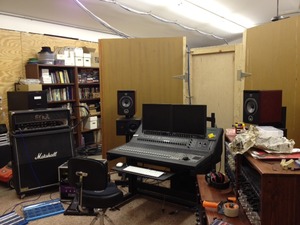 All along, I'd imagined that we would also do the mastering, but after years working on these tracks, I realized it was time to hand them off to someone with fresh ears and a new perspective. Thanks to one of my father's connections, I had been lucky a year or so earlier to observe a great jazz session at Fantasy Studios. While there, I got to meet Jesse Nichols, one of their engineers, and had really been impressed with his work and his personality. Awhile after that, Jesse was kind enough to help us pick out the perfect vocal mic for my voice (a Neumann TLM 103). With that front and center in my mind, it was natural to approach Jesse and Gannon Kashiwa for input on the mixes. We got some great help from Gannon on the mixes and I made another round of adjustments, then we handed those off to Jesse who did a magnificent job mastering everything. I doubt I'll ever do my own mastering again...
All along, I'd imagined that we would also do the mastering, but after years working on these tracks, I realized it was time to hand them off to someone with fresh ears and a new perspective. Thanks to one of my father's connections, I had been lucky a year or so earlier to observe a great jazz session at Fantasy Studios. While there, I got to meet Jesse Nichols, one of their engineers, and had really been impressed with his work and his personality. Awhile after that, Jesse was kind enough to help us pick out the perfect vocal mic for my voice (a Neumann TLM 103). With that front and center in my mind, it was natural to approach Jesse and Gannon Kashiwa for input on the mixes. We got some great help from Gannon on the mixes and I made another round of adjustments, then we handed those off to Jesse who did a magnificent job mastering everything. I doubt I'll ever do my own mastering again...
After it was all said and done, we had completed 9 songs. The two oldest ones ("Same Time Next Week" and "Don't Wanna Talk") date back to our Secret Life days. The rest of them are all songs from the Shatterbox era and would have been part of that unreleased batch of mixes. The good news for us, though, is that these versions of the songs sound much better and represent a much greater, more personal accomplishment.
 Post a Comment → Posted on
Post a Comment → Posted on  Monday, September 10, 2012 at 12:43PM
Monday, September 10, 2012 at 12:43PM 